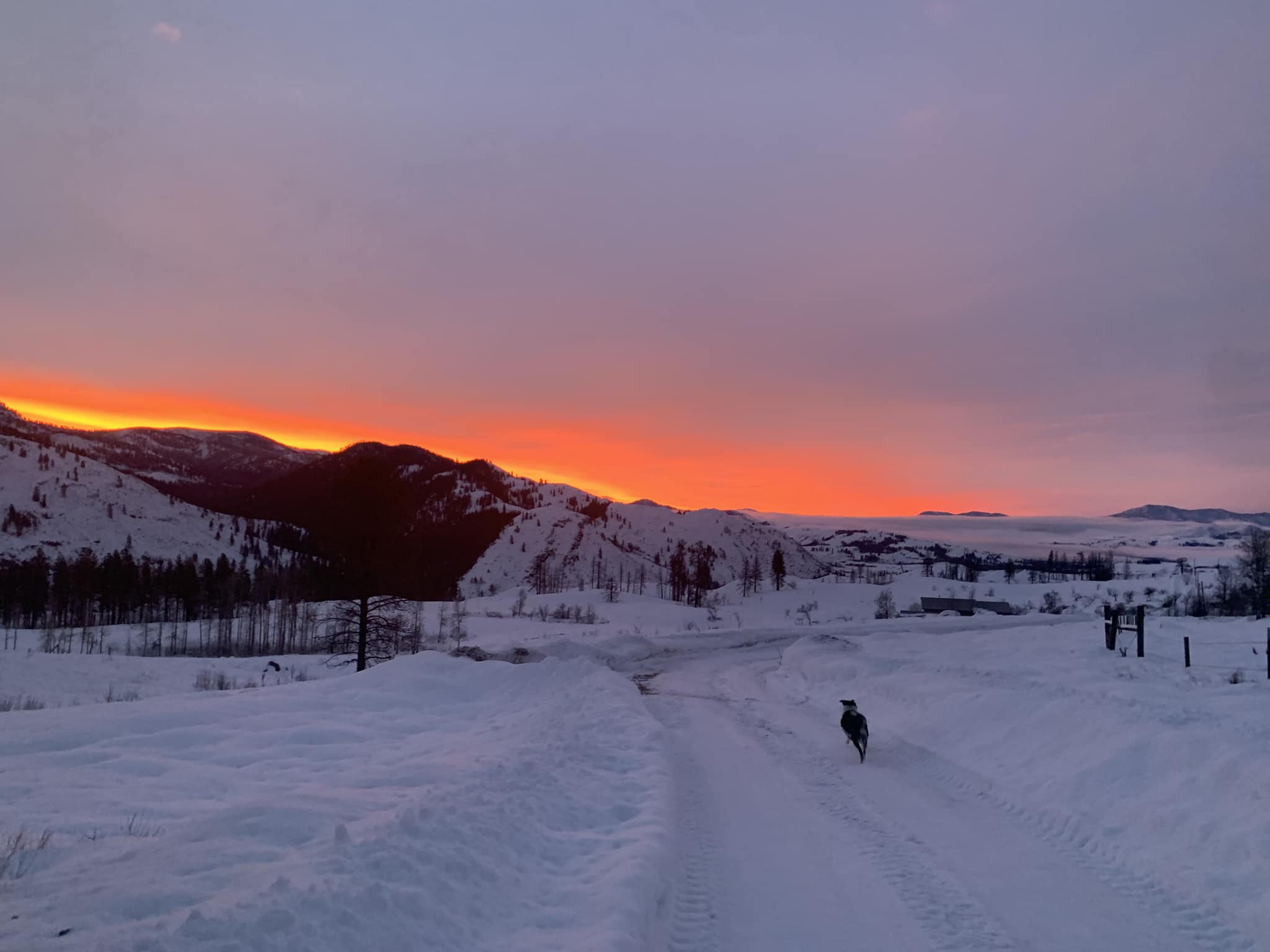December 22-28, 2024
Celebrating the holiday with new snow

Along with holiday cheer, gatherings of families and friends, and plenty of skiing, this was a fun weather week with delightful sunrise colors, heavy snow, and fleeting views of blue skies and snow-covered mountains.
Week in Review
While we had some amazing sunrises this week, I'm guessing the colors were indicative of incoming snowstorms that hit us in a series of bands over the course of the week. There was even talk of a repeat performance of late November's devastating bomb cyclone and, while conditions didn't quite reach that intensity, we did get a particularly heavy snowfall on Christmas night.


Two views of sunrise obscured by fog on the same morning. Photos by Jade Wolff
Early in the week, we also had one glorious morning of mostly clear skies, though shifting layers of valley fog kept hiding, then revealing, the sky, and clouds from another incoming snowstorm filled the valley by midday.

During this sunny break in the weather, I wandered around Pearrygin Lake and enjoyed seeing what birds were out and about. Most notable were groups of wild turkeys wandering through shrubs in search of dried serviceberries left over from the summer.

Other birds around the lake included a handful of pine grosbeaks, who are still hanging around in moderate numbers and eating leftover ash seeds. If you're quiet, you may hear some of their calls and it's a great way to become familiar with their calls because you sometimes hear them in the mountains in the summer but don't ever see the birds.

Finally, it was fun to see that a pair of our local bald eagles are already defending their traditional nest site long before spring arrives! The breeding season may be a long way off, but having babies is already on the minds of some birds including great horned owls who have been hooting and courting this week.

Observation of the Week: Birch Cones
While food is hard to come by in the winter, if you know where to look there's one abundant, but easily overlooked, source of food. In fact, I would have completely overlooked this source of food if hadn't been for a large flock of American goldfinches chittering and chasing each other in the branches of some birch trees.

Birch trees are an ecologically important tree of wet soils and riparian zones where they help stabilize soil and provide shelter and food for many birds and animals. In the Methow Valley they can be found in narrow bands of forest along major rivers and are easily recognized by their peeling (often red-colored) bark.


Much like closely related alder trees, birch trees produce copious crops of small cones filled with tiny, winged seeds (150,000 to 250,000 seeds per square yard).

While birches can produce a huge number of seeds, the seeds are so small and hard to extract from the cones that only a few types of small finches, such as goldfinches and pine siskins, are equipped to eat these seeds. This is great for these small finches, but the downside is that birches don't produce prolific crops of cones every year, so it means the finches can't always count on these trees.

